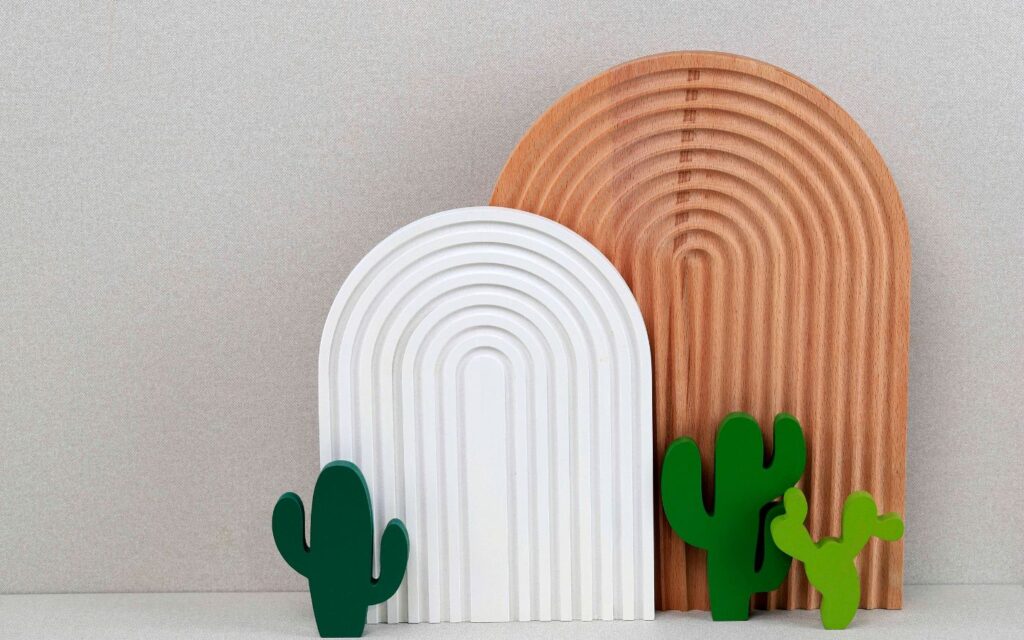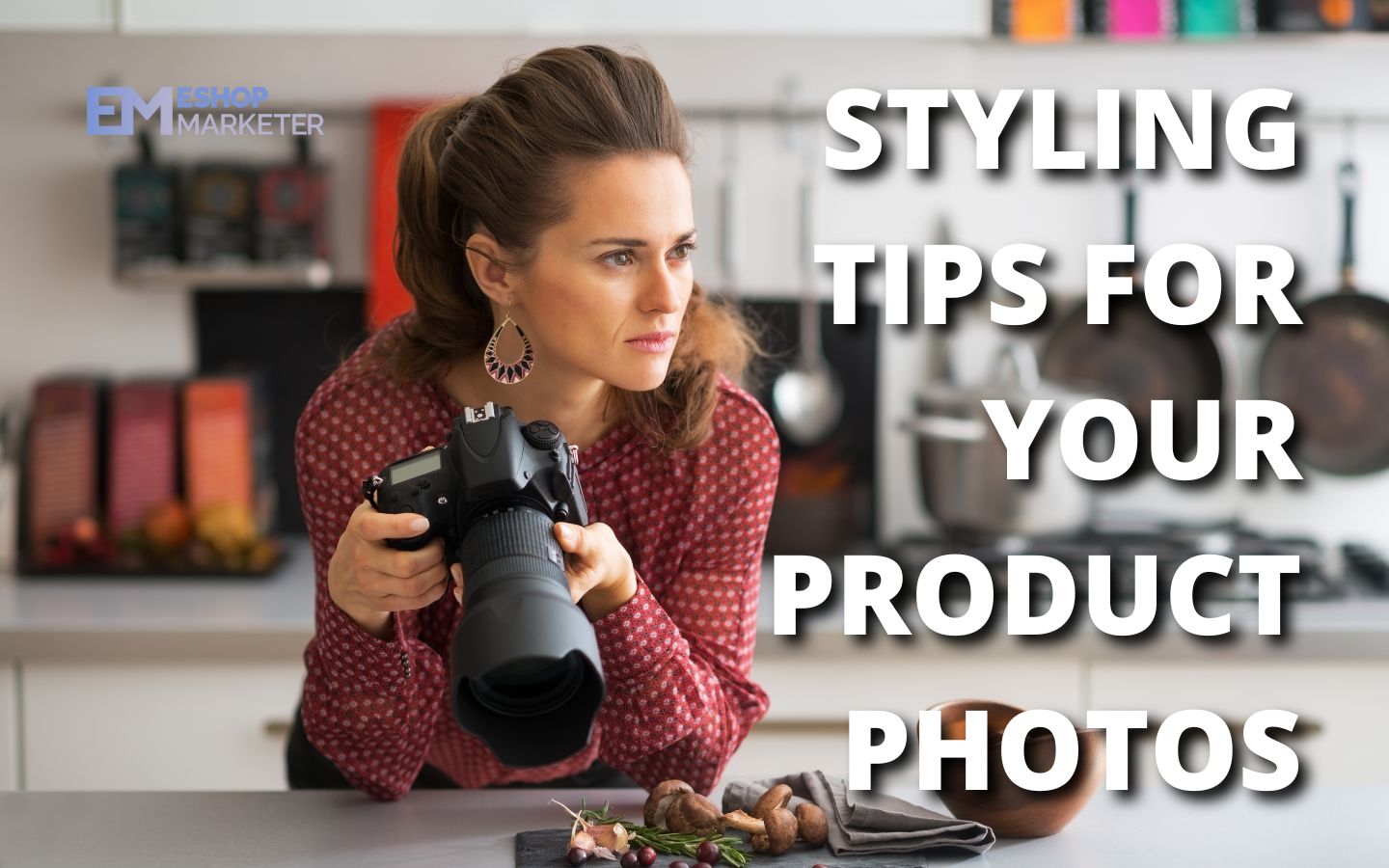Styling your product photos is essential for bringing your items to life in the imaginations of prospective customers, whether you utilize props, models, or other backdrops. You may communicate critical information about your products—as well as important information about your brand—by carefully using these features. This blog post will teach you how to make stylistic selections that are both attractive and speak to your target demographic.

Convey Your Brand Through Photography
When customers browse, the first thing they notice is your product photos. They form opinions about your company based on what they see in your images; therefore, it’s critical to understand and visually communicate your brand’s emphasis.
Determine Your Style
In a few words, describe your style. For example, if you offer colorful casual outfits for ladies, your style may be “colorful casual Friday,” which, when combined with your shop’s logo, can serve as an outline for your shop’s branding. Your store’s graphics symbolizes what customers may anticipate from your company. The more appealing and coherent your shop and listings appear, the more likely shoppers are to check your products and purchase them.
Be Consistent
Choose visual components that match the style of your store. Because the goal is to create a unified experience for shoppers visiting your business, it’s preferable if your items appear compatible and fit together logically. Make a plan for your images before you start styling them:
- Backdrops – A few complimentary photo backgrounds will help create a consistent design in your shop. All of the backdrops don’t have to be the same—a slight variance is fine—but they should complement one other. Consider wood backdrops, for example, if your business is rustic. Keep things simple when in doubt. Simple, clean backgrounds go with practically everything and accentuate your things while allowing them to stand out.
- Colors – Choose accessories and backdrops that compliment your item. Consider what feelings and associations colors might convey while making your selection.
- Lighting – Depending on the time of day you photograph, you may portray different moods. Morning light might appear gentle and cheery. The light in the early evening might be more romantic and mysterious.
- Textures – Textures in your images can help to emphasize the style of your shop. For example, if your brand is industrial, adding brick surfaces and rusted metal would amplify this feeling.
- Assortment – Do your items make sense to be styled and marketed together? Consider your Etsy shop to be a physical store. What kind of decorations would you put on the shelves? You may use these concepts in your product photography. For example, if you offer geometric planters and air plants, you might exhibit one of your plants snuggled within a planter. Creating a deliberate shop assortment can help you decrease the amount of photos you shoot while also allowing you to cross-promote. (Remember to provide a link to the other item in the listing.)

Use Props
Props help shoppers grasp your item’s intended use and visualize it in their lives. They can also serve practical purposes such as displaying scale, size, and use. Examine the thing you’re photographing before deciding on props. Make certain that the props do not detract from your goods or create uncertainty about what is for sale. Consider the following:
- What the product is.
- Its obvious qualities.
- Its interesting uses and hidden attributes.
- Occasions it can be used for.
- Your inspiration for designing it.
- Special process used to make it, if any.
- If it makes a good party favor or gift.
Usefulness
Show your product in motion so that consumers may see how it might be utilized. If your product is small and portable, consider staging a lifestyle image in which it is snuggled in a tote bag beside a book or wallet.
Process
Do your customers seek out your items because of how it is made? Do you use any special tools to make your items? You might photograph these with a dusting of sawdust, a needle, thread, a drawing, or an array of woodblock types.
Inspiration
For example, if your product was created in your lovely country studio, you may integrate branches or leaves from your garden into the pictures.
Play Around with Your Props
Set up a photo with one or two objects and try it out. Do they highlight anything interesting about your item? Be patient and evaluate what is wrong if anything doesn’t appear quite right. Is it necessary to attempt a different viewpoint, relocate the objects, alter the composition, or modify the focus? Continue to experiment and tweak, but be cautious not to overdo it by adding too many props. Your product should always be the focal point of the photograph. Finding the correct mix of props to highlight your product and vision may take some effort.

Use Models
Customers may see the shape and fit of clothing and accessories by watching real people model them in action. Utilizing a model for these things or not using one might be the difference between buyers knowing what you sell at a look or clicking away in uncertainty.
Finding Your Models
Because your models will be the face of your brand, choose people who reflect your target clients. Here are a few suggestions for locating models:
- Be your own role model. If you are the same age as your target consumer, you may use a remote shutter-release cord to take the shot from behind the camera.
- Consult with your family and friends. Invite everyone to a picnic in the park or a party at your place, and on the side, arrange a photo session, inviting guests over one at a time to get a few images taken.
- Look for models that are fresh to the industry. They are frequently eager to gain experience and expand their portfolio.
Play with Backgrounds
If you’re new to photographing models, begin by capturing them against clean, uncomplicated backdrops. Take simple pictures of the clothing from the front, side, and back. Once you’ve mastered simple model photographs, experiment with imaginative backdrops to make a visual tale. If you sell swimwear, for example, you may picture your model at a pool or beach. It’s fine to experiment. Just make sure your photographs flow together and establish a consistent brand aesthetic.
Communicate Sizing
Because online buyers cannot try on your things before purchasing, it is critical that you provide them with all of the information they want, both visually and in your product descriptions. Take note of your models’ dimensions and the size of the item they are wearing to provide your consumer with a reference for sizing and fit. (It’s also helpful to specify if the clothing has been pinned.)
A well-styled product photo may convey the impression of the goods and practical facts about the object.
Seasonal Photography
Four Seasons
- Summer – Consider bright hues like neon for a summer palette. Try fresh-cut flowers or motifs like dining al fresco, travel, and adventure as props.
- Fall or Autumn – Consider rich, warm colors for an autumn palette. Tweed, felt, dark wood, leather, ancient books, berries, and apples can all be used as props.
- Winter – Consider cold, subdued tones, greys, blues, whites, gold, silver, and a touch of red for a winter palette. Try worn wood, soft and comfortable textures, sparkles, twigs, and logs as props.
- Spring – Consider fresh earthy tones and pastels for a spring palette. Use herbs, flowers, plants, citrus, and linen cloth as props.
Wedding
Many brides and grooms shop online for their wedding necessities, so consider how your things could fit into this setting. Take images in wedding-like settings that seem like glimpses of natural occurrences to help purchasers visualize your item as part of their big day. Put your products in context so that customers can envision them as part of their special day. Capture place cards at a completely-set table, a centerpiece placed in a complete tablespace, or a bar menu at a fully stocked bar, for example.
Holiday
Don’t leave it to your clients’ imaginations: show them how your items can make wonderful gifts. During the holidays, shoppers frequently buy multiples of the same item, such as party favors and stocking stuffers, so consider shooting in multiples. Instead of just one, picture a stack of your bar soaps. Take a snapshot of a wrapped order if you offer gift-wrapping services. This emphasizes the fact that your product is an excellent gift.
You may be asking, how about digital products? Here are awesome websites with mockups for your digital designs.



